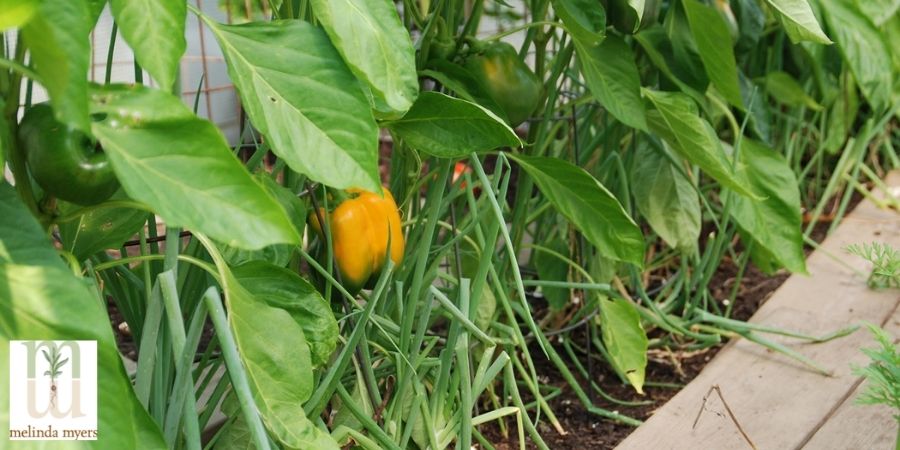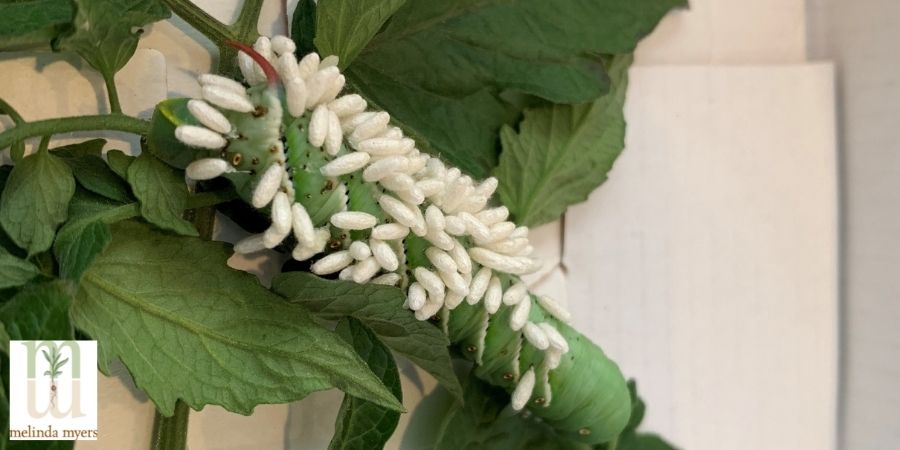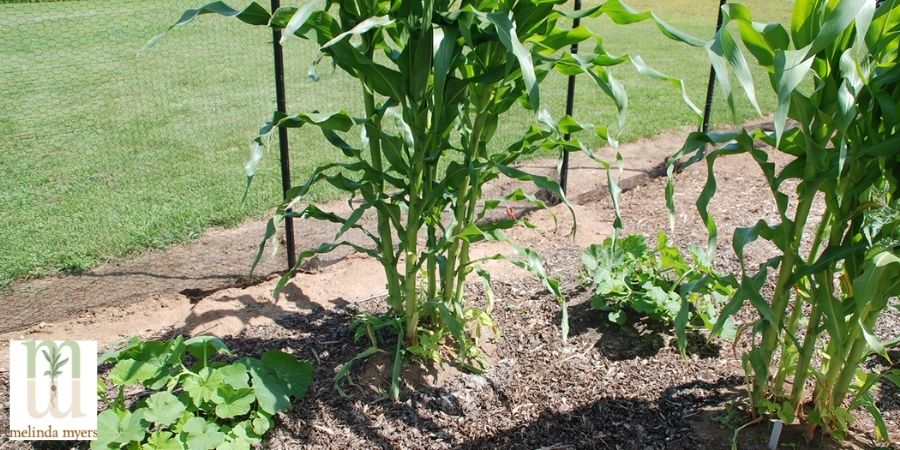What is Companion Planting?
- horticulturist and gardening expertMarch 26, 2022
When you ask gardeners about companion planting you may receive lots of different descriptions of this ancient gardening technique. Some strategies are based on facts and research while others are ideas passed along from one gardener to the next. As a former Extension agent, I always look for research-based information to pass along to you. I want to take a broader view of this topic providing you with a wide range of companion gardening strategies you can include in your gardens.
I like Jeff Gillman’s, author of The Truth About Organic Gardening, definition. He refers to it as polyculture, growing unrelated and different plants together to reduce insect and disease problems while promoting health and productivity. You may have already seen or experienced the problems when we opt for monoculture. Dutch Elm Disease and Emerald Ash Borer devastated large monocultures of street and landscape trees.
University of Massachusetts includes a wide range of benefits that can be obtained with companion planting. When partnering two or more plants together consider how they can increase nutrient uptake, improve pest management and reduce pesticide use, enhance pollination and result in more abundant harvests. Keep companion planting strategies in mind to achieve the desired benefits as you design your gardens.
Diversify Plants to Reduce Disease and Insects
As you plan your ornamental and edible gardens keep diversity in mind. Avoid individual gardens or large beds filled with the same plant known as monoculture. If disease moves into a large planting of the same plant it can quickly move from plant to plant decreasing productivity or killing the plants.
The same is true for different but related plants susceptible to the same insects and diseases. For example, growing related plants like eggplants, tomatoes, and peppers in the same garden bed, make it easier for insects and diseases to move from one susceptible plant to the next. Diversifying the varieties used can even help. The University of California tested four varieties of broccoli. As the number of different varieties in a test plot increased, the more the aphid infestation decreased.
Diversity also helps confuse insects that use visual clues to find their preferred plants. Combining plants of different colors, heights and shapes make it harder for the insects to find their favorites. Including plants that look like those they prefer attracts them. But when they begin to feed they realize it is not the plant they prefer. Misdirection results in the insects wasting energy and can help divert them away from your desirable plants.

Interplanting peppers and onions
Insect Control with Companion Planting
Managing insect pests is what most gardeners think of when they hear the word companion planting. The strategy involves growing plants together to repel or attract and trap insect pests to prevent them from damaging your desirable plantings. Marigolds may be the first plant that comes to mind. This plant is promoted as an insect repellent and trap plant when grown in and around a vegetable garden. Unfortunately, the scope of control and way to achieve results is often overlooked. Both the French and African marigolds produce a substance that is toxic to root nematodes. But the plants must be tilled under at the end of the growing season to release the chemicals into the soil.
A few studies did find marigolds and basil planted among tomatoes did help reduce thrip damage. A study out of Iowa found that both marigolds and nasturtiums planted with squash helped reduce damage from cucumber beetles and squash bugs. And the old practice of planting nasturtiums with squash to reduce squash bug populations is supported by research. As for repelling rabbits, however, I have found rabbits and woodchucks dining on these plants. But if you like the look of marigolds, adding them to the garden adds some welcome color and single-flowered varieties help support pollinators.
Strongly scented plants are often credited with repelling insects. A smelly plant does not always mean it emits odors that can mask the smell of other plants, attract insects serve as a trap plant, or repel insects from the garden.
The University of Minnesota shared a few research-based companion plantings that seemed to work. Growing spicier members of the Cabbage family such as arugula, mustard, rapeseeds, and napa cabbage helped trap flea beetles reducing the damage to other plants. Just make sure you want to sacrifice these plants for the good of others. Perhaps covering susceptible plantings with row covers that let air, light, and water through but keep out flea beetles and prevent cabbage worm damage may be a better option.
This research also found that planting 3 or more different species of plants together was more effective at controlling flea beetles than using a trap plant. Once again, diversity does seem to make a difference.
Thyme, onions, and nasturtiums grown near broccoli were found to reduce cabbage looper and cabbage worm damage. Including marigolds, onions, and nasturtium among cabbage plants also reduced the damage to cabbage plants done by these two insects. Plus you’ll enjoy the additional herbs, onions, and the beauty of the edible and ornamental nasturtium leaves and flowers.
Blue Hubbard squash has been found to be an effective trap for cucumber beetles, squash bugs, and squash vine borers. Just plant it away from your desirable plants and several weeks before planting your other squash and pumpkins for the best results. A thorough cleanup of this and other susceptible vines crops in the fall will also help reduce pest populations the following year.
You can find lists and companion planting charts in books and on the internet. Some are based on research and others are not. As you review the list consider what you want to accomplish with companion planting, the individual plant needs, and how they may or may not support each other. The University of Florida provides some companion planting charts in the PowerPoint presentation Organic Vegetable Gardening –Companion Planting. Keep the growing conditions in your region in mind as you use this information to plan your garden.
How to Attract Pollinators and Beneficial Insects
More than 80% of all flowering plant species rely on animals, such as native and honeybees, butterflies, moths, bats, and birds, for pollination. Apples, pears, almonds, blueberries, cucumbers, melons and squash are just a few of the more than 1,200 crops that rely on pollinators. Tomatoes don’t need a pollinator but when the bumblebee works its way into the flower and helps transfer the pollen the plant produces more tomatoes for you to enjoy.
Including a variety of flowers that appeal to the many different pollinators helps attracts them to the garden where they can get to work pollinating your plants. Increase the number of pollinators visiting your garden by including a variety of plants so you have flowers all season long. Include various colors and shapes to attract a wide variety of pollinators. You’ll also enjoy the color the season-long bloom these plants provide.
Use native plants suited to the growing conditions whenever possible. The pollinators have evolved with these plants into a mutually beneficial relationship. This means you’ll attract more pollinators and provide food and homes for many of their offspring.
Include plants that also attract predatory and parasitoid insects. These insects feed upon or parasitize other insects helping to reduce damage in the garden.

Parasitoid
Lady beetles, praying mantids, and spiders are the most well-known insect predators. But the smaller predatory wasps and mites, often go unnoticed but also feed on other insects in the garden. These eat their prey while insect parasitoids lay their eggs on or in their prey and feed on the host until it dies.
You may have noticed a parasitized tomato hornworm with white rice-like protrusions from its body. These are cocoons of a braconid wasp. The wasp eggs are laid on the hornworm, eventually, hatch and the larvae feed on the inside of the caterpillar until they are ready to pupate into an adult wasp. The cocoons where this transformation occurs are the white rice-like protrusions. When you see this allow the wasps to continue to work on the hornworm. Once the adult wasps emerge they will get to work on other hornworms in your garden.
Include plants that attract beneficial insects to the garden. Grow members of the carrot family like cilantro and dill that attract small parasitic wasps and flies. Plant colorful members of the aster family like the blanket flower, coreopsis, goldenrod, and sunflowers that are attractive to lady beetles and soldier beetles. Include members of the pea family that attract a variety of beneficial insects. Grow some sweet alyssum, basket-of-gold alyssum, and mustards to attract both parasitoids and predatory insects. Pop in some verbenas that are pretty to look at and help bring in a variety of beneficial insects to the garden.
Skip the pesticides that can harm the insects you are trying to attract. Tolerating a bit of damage rewards you with nature helping to manage the problems. If you kill the insect pests the beneficial insects need to survive they will go elsewhere to dine. Working with nature helps you grow healthier more productive plants with less effort. And if you need to intervene try more eco-friendly methods like traps and barriers. If you opt to use a chemical, even organic products are made to kill things. So always read and follow label directions carefully before applying.
Improve the Soil
Diversifying plantings by growing plants with different types of roots can help improve your soil. Many gardeners use long tap-rooted radishes like the Daiken to break through heavily compacted soil for aeration and to allow the plants that follow an easier time developing roots.
Grow deep-rooted melons and tomatoes to help move water and nutrients from deeper in the soil closer to the surface. This makes them more available to future plantings. Including beans, peas and other legumes in your planting rotations helps improve the soil. These plants fix nitrogen from the atmosphere and help reduce the garden’s overall fertilizer needs. Grow members of the legume family like snap peas or green beans you like to eat that also boost the nitrogen levels in the soil.
Or use legume cover crops like cowpeas to suppress weeds and improve the soil. Other plants like rye, buckwheat, or clover are also used for this purpose. You can plant the cover crop in fall and till it into the soil in spring. Plant early enough in fall so the cover crop can become established before winter. This also helps the cover crop withstand wildlife that may graze upon this green treat. Dig or till the cover crop into the soil at least one month prior to planting.
Make sure the cover crop you select is suited to your location and gardening style. Some are hard to kill and can become a problem. Do your research before selecting and planting cover crops in the garden.
The Three Sisters planting strategy used by many indigenous communities is a perfect example of plants providing mutual support. The corn supports the pole beans, the beans add nitrogen to the soil and together they create a visual deterrent to the squash vine borer. Plus the squash covers the soil acting as a mulch and according to the University of Minnesota may even deter some critters like raccoons from eating the corn.

Three Sister's Planting Strategy
Space Saving Companion Plantings
Using companion planting to maximize growing space has always been a priority of mine. I was a small space gardener for over 25 years and every square foot of soil had to provide beauty or produce. Now I have a lot more space but want to use it wisely. Include some of these techniques when designing your garden to achieve the best results from every inch of your garden.
Plant in wide rows eliminating the need for paths between individual rows. Allow just enough space for each plant to reach full size. Remember to use a variety of plants within the rows, diversity, to help reduce insect and disease problems. And make sure you have easy access to all parts of the garden for planting, weeding, and harvesting.
Grow quick maturing vegetables like radish, lettuce, and beets between those like cabbage and tomatoes that take longer to reach full size. By the time the bigger vegetables need the space, you will have harvested those quick maturing veggies. You’ll grow more vegetables instead of weeds while waiting for your larger plants to fill in and cover that space.
Once you finish harvesting one row or bed of vegetables, replant that space with another. Make sure the second or in some cases third planting will have time to mature before the end of your growing season. Use a variety of unrelated plants in the rotation. For example start with salad radishes, then beans, and end the season if time allows with leaf lettuce. Fertilize as needed when switching out plantings. Consider using Milorganite a low nitrogen slow release fertilizer that won’t interfere with flowering and fruiting or burn plants when the weather is hot and dry.
Another ancient practice that is still important today is crop rotation. Make notes on your garden plan and avoid planting the same plant or its relative in the same location each year. Switching plantings to unrelated vegetables each year reduces the risk of insects and diseases building up in the garden over time. This is a challenge for small space gardeners. Maintaining a healthy soil by incorporating compost, mulching with organic materials and fertilizing with Milorganite that contains 85% organic matter promotes healthy growth more resistant to insects, diseases, and environmental stresses.
Look for ways to partner plants for their health and beauty. Diversifying your garden designs using companion planting techniques, can help you create a beautiful and productive garden.

